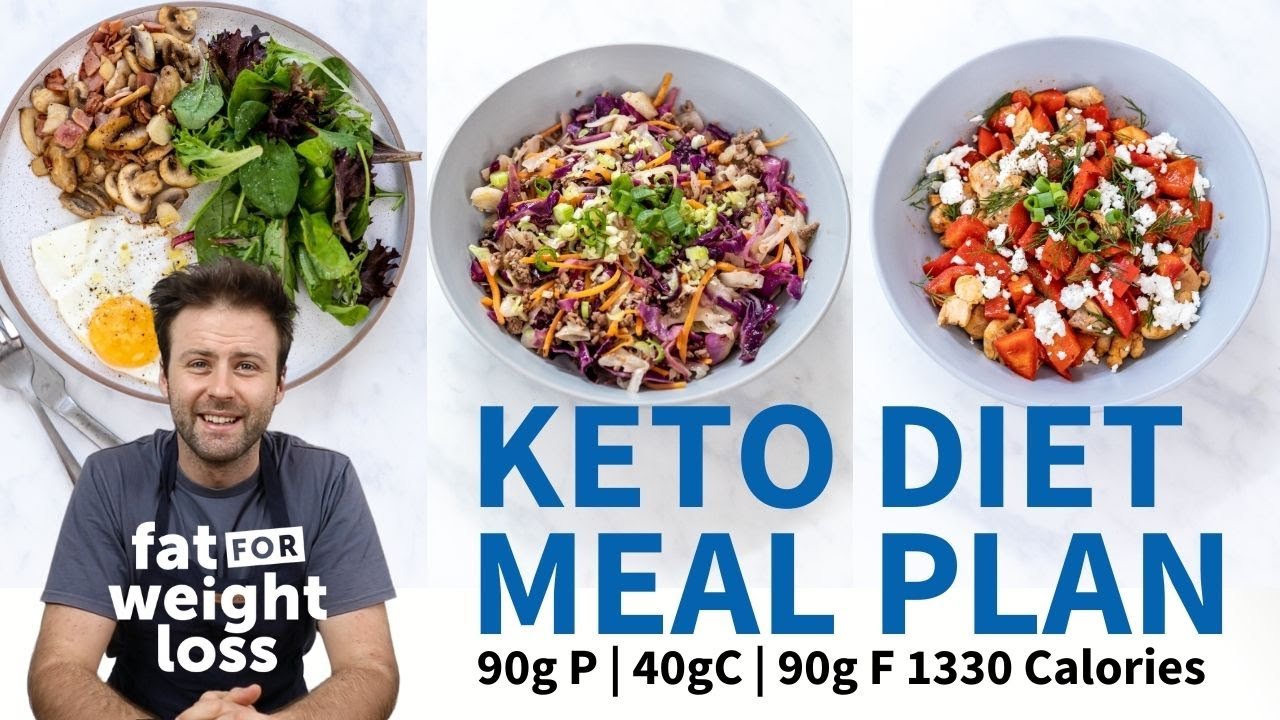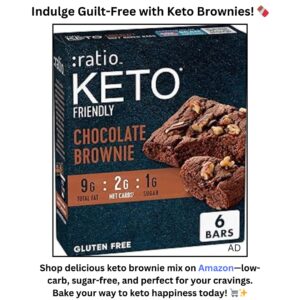Unlocking the Benefits of a Low-Carb High-Fat Diet: Your Guide to the Ketogenic Diet and Ketosis

Introduction
A low-carb high-fat diet has gained significant attention for its ability to promote weight loss, improve mental clarity, and enhance overall health. Known more commonly as the ketogenic diet, this eating plan focuses on drastically reducing carbohydrate intake while increasing the consumption of healthy fats. The result? Your body enters a metabolic state called ketosis, where it burns fat for fuel instead of relying on carbohydrates. In this guide, we’ll delve into the principles of the ketogenic diet, the science behind ketosis, and how you can successfully adopt this low-carb high-fat lifestyle.
Table of Contents:
- Low-Carb High-Fat Diet: What Is the Ketogenic Diet?
- The Science of Ketosis Explained
- Getting Started with a Low-Carb High-Fat Diet
- Calculating Your Macros
- What to Eat on a Low-Carb High-Fat Diet
- Foods to Avoid on a Low-Carb High-Fat Diet
- Sample Meal Plan
- Benefits of a Low-Carb High-Fat Diet
- Effective Weight Loss
- Enhanced Mental Clarity and Focus
- Blood Sugar and Insulin Management
- Increased Energy and Stamina
- Potential Neurological Benefits
- Heart Health Improvements
- Challenges You Might Face
- The Keto Flu
- Social Eating Situations
- Managing Cravings
- Digestive Adjustments
- Variations of the Ketogenic Diet
- Standard Ketogenic Diet (SKD)
- Cyclical Ketogenic Diet (CKD)
- Targeted Ketogenic Diet (TKD)
- High-Protein Ketogenic Diet
- Debunking Myths About the Low-Carb High-Fat Diet
- Tips for Success on a Low-Carb High-Fat Diet
- Planning and Preparing Meals
- Hydration and Electrolyte Balance
- Eating Out While on a Low-Carb High-Fat Diet
- Tracking Your Progress
- Delicious Recipes to Start Your Low-Carb High-Fat Journey
- Conclusion: TAKE THE KETO QUIZ NOW
1. Low-Carb High-Fat Diet: What Is the Ketogenic Diet?
A low-carb high-fat diet is designed to shift your body’s energy reliance from carbohydrates to fats. Known as the ketogenic diet, this eating plan involves a significant reduction in carbohydrate intake while prioritizing healthy fats. When you limit your carbs to around 20-50 grams per day, your body enters a metabolic state called ketosis. In this state, your liver converts stored fat into ketones, which then serve as a primary fuel source for your body and brain.
The ketogenic diet was originally developed in the 1920s to help manage epilepsy. Today, it’s widely recognized for its potential benefits in weight loss, mental performance, and overall metabolic health.
2. The Science of Ketosis Explained
To understand how a low-carb high-fat diet works, it’s important to explore the science behind ketosis. Normally, the body relies on glucose, derived from carbohydrates, as its main source of energy. When you consume carbohydrates, they break down into glucose, which enters your bloodstream and fuels your cells. Excess glucose is stored as glycogen in your liver and muscles.
However, when carbohydrate intake is drastically reduced, your body’s glycogen stores become depleted. This triggers a metabolic shift, forcing your body to burn fat for energy. During this process, known as ketogenesis, your liver breaks down fatty acids into molecules called ketones. These ketones then circulate in the bloodstream and are used as an alternative energy source, especially by the brain, which cannot directly use fat for fuel.
The low-carb high-fat diet keeps insulin levels low, which is crucial for effective fat burning. Insulin, the hormone responsible for regulating blood sugar levels, also promotes fat storage when it is elevated. By minimizing carbs and thus insulin production, your body can more efficiently burn fat for energy.
3. Getting Started with a Low-Carb High-Fat Diet
Transitioning to a low-carb high-fat diet requires careful planning to ensure you enter and maintain ketosis. This section will guide you through the essential steps to start your ketogenic journey.
Calculating Your Macros
Understanding and calculating your macronutrient needs is crucial when adopting a low-carb high-fat diet. Macros, or macronutrients, include carbohydrates, fats, and proteins, and getting the right balance of these is key to achieving ketosis.
- Carbohydrates: Limited to 5-10% of your daily caloric intake, this typically means 20-50 grams of net carbs per day.
- Fats: Should make up 70-80% of your daily calories. Focus on consuming healthy fats from sources like avocados, nuts, seeds, and oils.
- Proteins: Should constitute 20-25% of your daily intake. It’s important not to consume too much protein, as excess amounts can be converted into glucose, potentially disrupting ketosis.
Numerous online calculators can help you determine your exact macronutrient needs based on your weight, activity level, and goals.
What to Eat on a Low-Carb High-Fat Diet
In a low-carb high-fat diet, the focus is on foods rich in healthy fats, moderate in protein, and low in carbohydrates. Here’s what to include in your diet:
- Healthy Fats: Avocados, olive oil, coconut oil, butter, ghee, nuts, seeds, and fatty fish like salmon and mackerel.
- Proteins: Grass-fed beef, pork, chicken, turkey, eggs, and full-fat dairy products like cheese, cream, and yogurt.
- Low-Carb Vegetables: Leafy greens (spinach, kale), cruciferous vegetables (broccoli, cauliflower), zucchini, bell peppers, and cucumbers.
- Berries: In small amounts, berries like strawberries, blueberries, and raspberries are acceptable due to their lower carb content.
Foods to Avoid on a Low-Carb High-Fat Diet
Avoiding high-carb foods is essential to staying in ketosis on a low-carb high-fat diet. Here’s a list of foods to steer clear of:
- Sugary Foods: Candy, cakes, cookies, sodas, and fruit juices.
- Grains and Starches: Bread, pasta, rice, potatoes, and corn.
- High-Carb Fruits: Bananas, apples, oranges, and grapes.
- Legumes: Beans, lentils, chickpeas, and peas.
- Processed Foods: Anything with added sugars or unhealthy fats should be avoided.
Sample Meal Plan
To help you get started, here’s a sample meal plan for a low-carb high-fat diet:
Breakfast:
- Scrambled eggs cooked in butter with spinach and avocado slices.
Lunch:
- Grilled chicken breast with a mixed greens salad, topped with olive oil and lemon juice.
Dinner:
- Baked salmon served with asparagus and a side of cauliflower mash.
Snacks:
- A handful of almonds, cheese cubes, or cucumber slices with cream cheese.
4. Benefits of a Low-Carb High-Fat Diet
The low-carb high-fat diet offers numerous benefits beyond weight loss. Let’s explore how this dietary approach can positively impact various aspects of your health.
Effective Weight Loss
One of the primary reasons people adopt a low-carb high-fat diet is its effectiveness in promoting weight loss. By shifting your body’s fuel source from carbohydrates to fat, the diet encourages the burning of stored fat for energy. Additionally, ketosis has been shown to reduce appetite, making it easier to maintain a calorie deficit without feeling deprived.
Enhanced Mental Clarity and Focus
Many individuals on a low-carb high-fat diet report improved cognitive function and mental clarity. Ketones, the byproducts of fat metabolism, are a more efficient fuel source for the brain than glucose. As a result, many people experience better focus, concentration, and overall mental performance while in ketosis.
Blood Sugar and Insulin Management
For those with insulin resistance or type 2 diabetes, a low-carb high-fat diet can be particularly beneficial. By reducing carbohydrate intake, the diet helps stabilize blood sugar levels and improve insulin sensitivity. This can lead to:
- Lower A1C Levels: Reflecting a reduction in average blood glucose levels over time.
- Reduced Need for Medication: Some individuals with type 2 diabetes may be able to reduce or eliminate their need for insulin or other glucose-lowering medications, under medical supervision.
Increased Energy and Stamina
As your body becomes accustomed to burning fat for fuel, you may notice more consistent and sustained energy levels throughout the day. The low-carb high-fat diet eliminates the energy spikes and crashes commonly associated with high-carb diets, providing you with steady stamina.
Potential Neurological Benefits
Research suggests that a low-carb high-fat diet may offer therapeutic benefits for various neurological conditions. For instance:
- Epilepsy: The ketogenic diet was originally developed as a treatment for epilepsy and remains effective for reducing seizures, particularly in children with drug-resistant epilepsy.
- Alzheimer’s Disease: Some studies indicate that ketosis may improve cognitive function in individuals with Alzheimer’s by providing an alternative energy source for brain cells.
- Parkinson’s Disease: Early research suggests that the keto diet might have neuroprotective effects in Parkinson’s, potentially improving motor symptoms and quality of life.
Heart Health Improvements
Despite its high fat content, the low-carb high-fat diet can improve cardiovascular health markers. For example:
- Improved Cholesterol Levels: The diet can raise HDL (good) cholesterol levels while lowering LDL (bad) cholesterol and triglycerides.
- Lower Blood Pressure: The diet may also help reduce blood pressure, lowering the risk of heart disease and stroke.
5. Challenges You Might Face
Adopting a low-carb high-fat diet comes with its own set of challenges. However, with the right strategies, these obstacles can be easily managed.
The Keto Flu
As your body adjusts to a low-carb high-fat diet, you may experience symptoms commonly known as the “keto flu.” These symptoms, including headaches, fatigue, irritability, and nausea, are typically temporary. They can be managed by:
- Staying Hydrated: Drink plenty of water to help flush out toxins and reduce symptoms.
- Replenishing Electrolytes: Sodium, potassium, and magnesium levels can drop on a keto diet, so consider supplements or foods rich in these minerals.
- Easing into the Diet: Gradually reducing your carb intake rather than making an abrupt change can help minimize the severity of keto flu symptoms.
Social Eating Situations
Navigating social events while on a low-carb high-fat diet can be challenging, especially when high-carb foods are the norm. To stay on track:
- Plan Ahead: If dining out, review the restaurant menu in advance for low-carb high-fat options.
- Bring Your Own Dish: At gatherings, consider bringing a keto-friendly dish to share.
- Communicate Your Needs: Don’t hesitate to ask for modifications to fit your dietary requirements.
Managing Cravings
Cravings for high-carb foods can be difficult to manage, especially when you’re new to a low-carb high-fat diet. To combat cravings:
- Eat High-Fat Snacks: Healthy fats can help keep you fuller for longer, reducing the urge to snack on carbs.
- Stay Occupied: Engaging in activities can take your mind off cravings.
- Find Keto Alternatives: There are many low-carb versions of your favorite high-carb foods, such as keto bread or cauliflower pizza crust.
Digestive Adjustments
Switching to a high-fat, low-carb diet can cause digestive discomfort for some people. Common issues include constipation, diarrhea, and bloating. To alleviate these symptoms:
- Increase Fiber Intake: Include low-carb, high-fiber vegetables in your diet to support digestion.
- Stay Hydrated: Drinking plenty of water helps prevent constipation.
- Consider Probiotics: Probiotic supplements or fermented foods like yogurt and kimchi can improve gut health and digestion.
6. Variations of the Ketogenic Diet
The keto diet is not a one-size-fits-all approach. There are several variations, each tailored to different needs and goals.
Standard Ketogenic Diet (SKD)
The Standard Ketogenic Diet is the most common version, consisting of:
- 70-80% Fat
- 20-25% Protein
- 5-10% Carbohydrates
This version is ideal for most people, especially those looking to lose weight and improve metabolic health.
Cyclical Ketogenic Diet (CKD)
The low-carb high-fat diet can also be structured as a Cyclical Ketogenic Diet, which involves periods of higher-carb refeeding, typically 1-2 days per week. This approach is often used by athletes or those who need more carbs for intense physical activity.
Targeted Ketogenic Diet (TKD)
The Targeted Ketogenic Diet allows for a small amount of carbohydrates around workouts. This strategy provides extra energy for exercise while maintaining ketosis the rest of the time.
High-Protein Ketogenic Diet
This variation is similar to the Standard Ketogenic Diet but includes more protein:
- 60-65% Fat
- 30-35% Protein
- 5-10% Carbohydrates
The low-carb high-fat diet in this form is often chosen by bodybuilders or those looking to preserve muscle mass while losing fat.
7. Debunking Myths About the Low-Carb High-Fat Diet
There are several myths and misconceptions about the diet that need to be addressed. Let’s clarify some of the most common ones:
- Myth 1: This diet is all about eating bacon and butter.
- Truth: While the diet is high in fat, it emphasizes healthy fats from sources like avocados, nuts, and olive oil, not just processed meats and butter.
- Myth 2: You can’t eat any carbohydrates on a low-carb high-fat diet.
- Truth: Although carbohydrate intake is significantly reduced, you can still enjoy low-carb vegetables and small amounts of berries.
- Myth 3: The low-carb high-fat diet is unhealthy due to its high saturated fat content.
- Truth: Recent research suggests that saturated fat is not as harmful as once believed, particularly when consumed as part of a diet that is low in carbs and high in healthy fats.
- Myth 4: Ketosis and ketoacidosis are the same.
- Truth: Ketosis is a natural, safe metabolic state, whereas ketoacidosis is a dangerous condition associated with uncontrolled type 1 diabetes.
8. Tips for Success on a Low-Carb High-Fat Diet
To maximize the benefits of the ketogenic and ensure long-term success, consider these practical tips:
Planning and Preparing Meals
Planning your meals in advance can help you stick to your low-carb high-fat diet and avoid high-carb temptations. Preparing keto-friendly snacks and meals ahead of time ensures that you always have healthy options available.
Hydration and Electrolyte Balance
Since a low-carb high-fat diet increases water loss, staying hydrated is crucial. Drink plenty of water and consider supplementing with electrolytes, especially sodium, potassium, and magnesium, to avoid imbalances that can lead to symptoms like muscle cramps and fatigue.
Eating Out While on a Low-Carb High-Fat Diet
Navigating restaurant menus can be challenging, but with a few strategies, you can maintain your diet:
- Choose Simple Dishes: Opt for grilled meats, salads, and steamed vegetables.
- Ask for Modifications: Request substitutions like extra vegetables instead of starchy sides.
- Avoid Sugary Sauces: Many sauces and dressings contain hidden sugars, so ask for them on the side or skip them altogether.
Tracking Your Progress
Monitoring your progress is essential for success on a low-carb high-fat diet. Regularly checking your ketone levels, tracking your weight, and noting any changes in your energy levels, mood, and overall well-being can help you stay on track. If you’re not seeing the desired results, consider adjusting your macronutrient ratios, calorie intake, or exercise routine.
9. Delicious Recipes to Start Your Low-Carb High-Fat Journey
To help you get started, here are a few simple and delicious recipes that align with a low-carb high-fat diet:
Ketogenic Avocado Egg Salad:
- Ingredients: Avocado, boiled eggs, mayonnaise, Dijon mustard, lemon juice, salt, and pepper.
- Instructions: Mash the avocado and mix it with chopped boiled eggs, mayonnaise, mustard, lemon juice, salt, and pepper. Serve over a bed of leafy greens.
Ketogenic Garlic Butter Steak Bites:
- Ingredients: Sirloin steak, garlic, butter, fresh parsley, salt, and pepper.
- Instructions: Cut the steak into bite-sized pieces. Cook in a hot skillet with butter and garlic until browned. Garnish with fresh parsley.
Keto Zucchini Noodles with Pesto:
- Ingredients: Zucchini, olive oil, basil, pine nuts, Parmesan cheese, garlic, salt, and pepper.
- Instructions: Spiralize zucchini into noodles. Blend basil, pine nuts, Parmesan, garlic, and olive oil to make pesto. Toss zucchini noodles with pesto and serve.
10. Conclusion
The low-carb high-fat diet is a powerful tool for improving health, losing weight, and enhancing mental clarity. By understanding the principles of this diet, planning your meals carefully, and overcoming common challenges, you can successfully transition to and maintain a ketogenic lifestyle.
Whether you’re just beginning or looking to optimize your approach, this guide provides the knowledge and strategies you need to thrive on a high-fat diet. As with any significant dietary change, it’s important to consult with a healthcare provider to ensure that the diet is appropriate for your individual needs and health status.
With the right commitment and information, you can enjoy the numerous benefits of a low-carb high-fat lifestyle and take control of your health and well-being.








